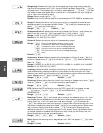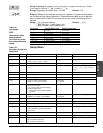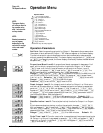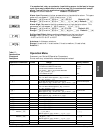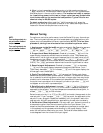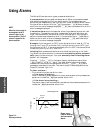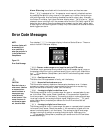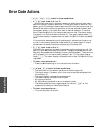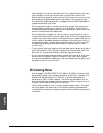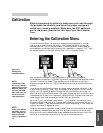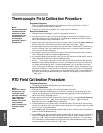
5.4 ■ Tuning and Operating Watlow Series 93
Tuning and Operating
NOTE:
When the alarm output is
de-energized, the N.O.
contact is open in the
alarm condition. The N.C.
contact is closed in the
alarm condition.
Press once -
Clear a latched
and corrected
alarm.
The Series 93 has two alarm types, process and deviation.
A process alarm sets an absolute temperature. When the process exceeds
that absolute temperature limit an alarm occurs. The process alarm set
points may be independently set high and low. Under the Setup Menu, select
the type of alarm output with the [`Ot2] parameter. [`PrA] sets a process
alarm with an alarm message displayed. [``Pr] sets a process alarm with no
alarm message displayed.
A deviation alarm alerts the operator when the process strays too far from
the set point. The operator can enter independent high and low alarm set-
tings. The reference for the deviation alarm is the set point. Any change in
set point causes a corresponding shift in the deviation alarm. [`dEA] sets a
deviation alarm with an alarm message displayed. [``dE] sets a deviation
alarm with no alarm message displayed
Example: If your set point is 100°F, and a deviation alarm is set at +7°F as
the high limit, and -5°F as the low limit, the high alarm trips at 107°F, and
the low alarm at 95°F. If you change the set point to 130°F, the alarms follow
the set point and trip at 137°F and 125°F.
Latching: Both process and deviation alarms can be latching or non-latch-
ing. When the alarm condition is removed a non-latching alarm automati-
cally clears the alarm output. You must manually clear a latching alarm
before it will disappear.
Flashing [``LO] or [``HI] in the lower display indicates an alarm when
[`Ot2] is set to [`PrA] or [`dEA]. The lower display alternately shows
information from the current parameter and the [``LO] or [``HI] alarm
message at one-second intervals. The alarm output is de-energized and the
Output 2 indicator light is lit.
To clear an alarm…
• First correct the alarm condition, then…
• If the alarm is latching…
Clear it manually; press the ˆInfinity key once as soon as the process tem-
perature is inside the [`HSA] parameter alarm limit.
• If the alarm is non-latching…
The alarm clears itself automatically as soon as the process temperature is
inside the [`HSA] parameter alarm limit.
Figure 5.4 -
Clearing an Alarm.
200
Temperature
Pro
180
Autotune
Begins
90% of
Auto-tuning at a Se
93
Using Alarms



